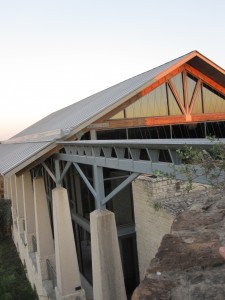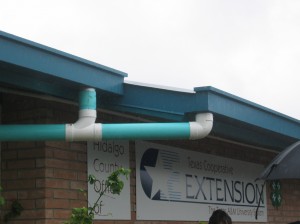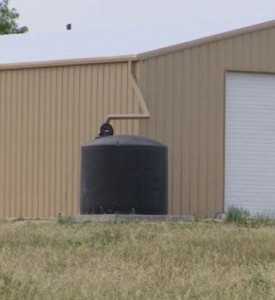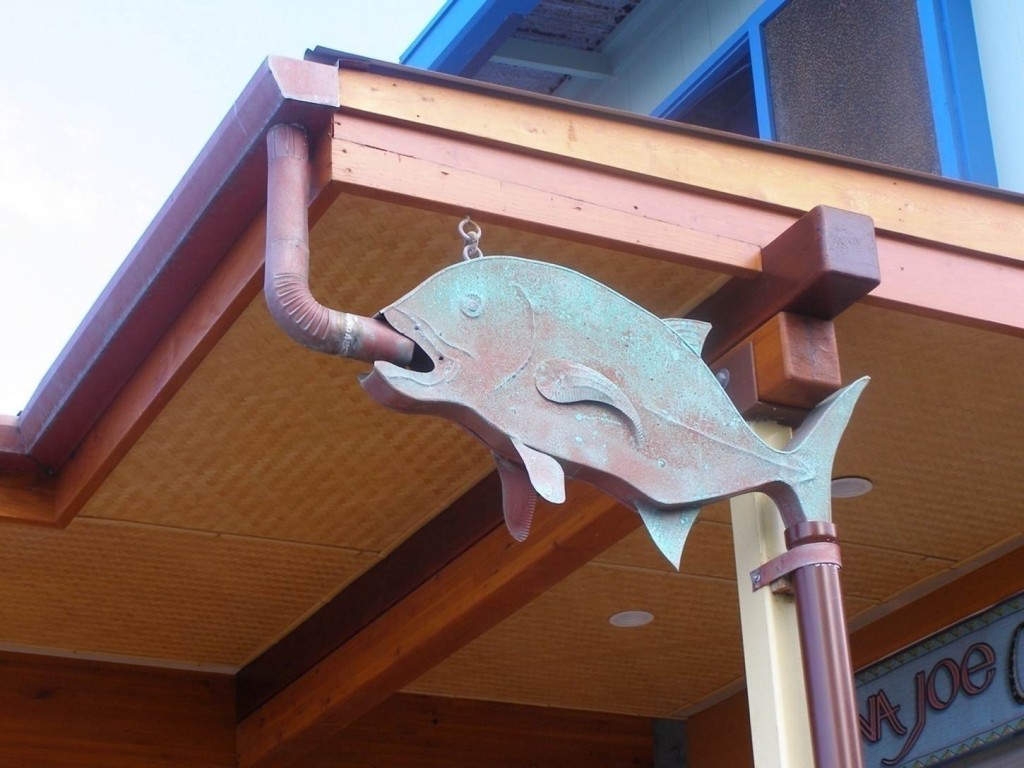 The conveyance system is a fancy term for the gutters and downspouts. These are basically the networks of pipes that move the water from the roof surface to the storage containers. When selecting gutters and downspouts, it’s important to consider three factors: sizing, proper installation, and aesthetics.
The conveyance system is a fancy term for the gutters and downspouts. These are basically the networks of pipes that move the water from the roof surface to the storage containers. When selecting gutters and downspouts, it’s important to consider three factors: sizing, proper installation, and aesthetics.
Sizing
Gutters – The gutters should be sized so that they adequately move rainwater runoff from a 100-year storm event. A 100-year storm event has a 1% chance of happening every year and produces rainfall with great intensities. Places that have intense storm events, such as Corpus Christi, would need wider gutters than places with less intense rain events, like Seattle. As a general rule, gutters should be at least 5 inches wide.
Downspouts – Provide one square inch of downspout area for every 100 square feet of roof area. For example, a 2″ x 3″ downspout (6 square inches) can accommodate runoff from a 600 square foot roof. A 3″ x 4″ downspout (12 square inches) can accomondate runoff from a 1,200 square foot roof. The same rule can be used for circular PVC piping.
In either case, a slight increase in pipe or gutter size can drastically increase the price of a system, so it’s important to size a system accurately. For more detailed information on system sizing, you can purchase the Rainwater Harvesting: Systems Planning manual, available at the AgriLife Bookstore website.
Proper Installation
For both gutters and downspouts, proper installation is critical so that they function properly and will not be a safety concern. We recommend the following:
- Rounded-bottom gutters are preferred because them limit debris buildup.
- Slope gutters at 1/16″ per foot of length to adequately drain them.
- Keep the front of the gutter 1/2 inch lower than the back to prevent water from splashing against the building.
- Provide gutter hangers every three feet or every foot in areas where there is heavy snow.
- PVC pipe should be painted to reduce UV sunlight breakdown.
Aesthetics
 Gutters are a common sight around the U.S. and there are countless colors and designs to match the appearance of a building. Because of this, the aesthetics of gutters usually are not a concern. However, in RWH the use of PVC piping is most recommended to convey water and can be (in some opinions) be unsightly. To improve the appearance, you can paint the PVC to match the color of the building (left). On metal structures, you can also place the old gutter over the PVC pipe to hide it. You can also use unique styles of transition fittings, as seen in the picture below.
Gutters are a common sight around the U.S. and there are countless colors and designs to match the appearance of a building. Because of this, the aesthetics of gutters usually are not a concern. However, in RWH the use of PVC piping is most recommended to convey water and can be (in some opinions) be unsightly. To improve the appearance, you can paint the PVC to match the color of the building (left). On metal structures, you can also place the old gutter over the PVC pipe to hide it. You can also use unique styles of transition fittings, as seen in the picture below.

Pingback: DIY Carports: How to Build Your Own | Keen’s Buildings